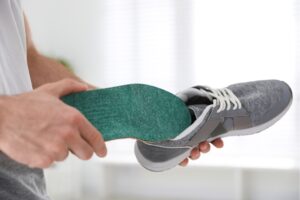EHP Clinic offers chiropractic, physiotherapy, kinesiology, personal training, massage therapy and many more.

Why Are Squats Beneficial
Performing the squat may help strengthen overall strength and mobility in the hips, knees, and ankles. The squat is a unique strength preparing exercise that requires multiple muscles in your upper and lower body and has been referred to as one of the best compound movements in the health and fitness industry.
A large number of these muscles involved in squats assist with your day by day activities, as in walking, climbing stairs, bending over, or manipulating external weight as in weight training. They likewise assist with performing athletic-related exercises by improving one’s musculoskeletal system through adaptations in the movement.
Adding squats to your exercises can improve mobility and supporting your performance on tasks, lowering your risk of injury, and keeping you moving more effectively over the course of the day. In any case, these are only a couple of the advantages. Below are some science based articles that provide further information on squats, and the benefits that come with it.
Evidence Base Studies
Cava, A. M., Corel-Ibáñez, J., González-Badillo, J. J., & Morán-Navarro, R. (2019, May 15). PubMed. National Center for Biotechnology Information. Retrieved January 24, 2022, from https://pubmed.ncbi.nlm.nih.gov/
- Suggests that full squats produces greater neuromuscular and function adaptations which helps to improve strength and functional performance, while reducing lower back pain
Schoenfeld BJ. Squatting kinematics and kinetics and their application to exercise performance. J Strength Cond Res. 2010 Dec;24(12):3497-506. doi: 10.1519/JSC.0b013e3181bac2d7. PMID: 20182386.
- States that the squat movement pattern is arguably one of the most primal and critical fundamental movements necessary to improve sport performance, to reduce injury risk and to support lifelong physical activity.
Yoshiko, A., & Watanabe, K. (2021, March 25). Impact of home-based squat training with two-depths on lower limb muscle parameters and physical functional tests in older adults. Nature News. Retrieved January 24, 2022, from https://www.nature.com/articles/s41598-021-86030-7
- This study proved that home-based weight-bearing squat training improves lower limb function in older adults, as well as performance in physical functional tests related to activities of daily living. Moreover, such training benefits older adults regardless of whether squats are full range of motion or part range of motion
How To Perform A Proper Body Weight Squat
Step 1: Stand up straight with your feet slightly wider that hip width apart. Your hips, knees, and toes should be facing forward. You may point your toes slightly outward, as it may help to perform the squat. Your arms may be crossed over your chest or pointed forward.
Step 2: Slightly tighten your core while bending your knees as your hips should be lowering down, as in sitting in a chair.
Your knees are allowed to follow forward past your toes as some may find it difficult to squat down without their knees passing there toes, due to their natural anatomy and mobility of their joints.
Step 3: Once your femur is parallel to the floor. Rise back up to starting position and repeat.
For More Information
EHP Clinic’s team has certified personal trainers ready to help you! Call our clinic for more information or to book your first session now below!


